Biography
Edgar Brandt (Paris 1880 - 1960 Collonge-Bellerive, Switzerland)
"What Lalique achieved with fire and glass, Brandt achieved with fire and iron" (Pierre Du Columbier, quoted in Kahr, p. 192).
The highly talented young Edgar studied at the famous Ecole Nationale Professionnelle de Vierzon with a focus on wrought ironwork. He graduated in 1898 with a technical diploma. As early as 1901, he opened his own small studio in Paris. He first began making jewelry and smaller objects in iron with gold or silver accents or solid silver, finding the models for his designs in nature. Gingko, wheat and pine cones in particular are part of his design language. He used tiny equipment and a soldering iron instead of a fireplace to make them. From 1904, he expanded his program to include household appliances and ornaments such as door knockers and drawer knobs. Metal-decorated furniture and lamp bases soon became part of his repertoire as well. The workshop achieved great success and Brandt was able to hire a number of metalworkers who took care of the execution of his larger models. The first collaboration with the glass companies Daum Frères and Etablissements Gallé dates back to 1912, as the first table lights of the collaborations at the Salon in the same year show (Kahr, p. 38). Companies such as René Lalique and the Verreries Schneider were to follow. Brandt also came to the attention of various architects. His workshop received commissions for wrought-iron architectural elements, interior fittings such as stair railings, and movable fireplace screens and mantelpieces. Brandt's most renowned work of the pre-war period was certainly the railing for the 'Escalier Mollien' in the Musée du Louvre, installed in June 1914. During his service in the First World War, where he distinguished himself as a sniper, his profession served him well. His proposals for the modernization of French weapons led to various commissions from the French state, which accompanied his main tasks for many years.
After the First World War, the Edgar Brandt workshop was able to resume business seamlessly. Until 1932, regular exhibitions were held, and participation in the Exposition des Art Décoratifs et Industriels Modernes in 1925 once again extended the company's fame beyond the borders of France to Great Britain and the USA. In addition to a showroom in Paris, branches were opened in London and New York under the name Ferrobrandt. In 1939, Brandt visited the USA for the first time himself with his wife and son, but had to cut the trip short due to the outbreak of war. His family then settled in neutral Switzerland. One of Brandt's last works involved the restoration of the iron grilles of Versailles, which were presented to the public in 1956. Edgar Brandt died in Geneva in 1956 after a long illness.
The artistic blacksmith always followed with great attention the innovations in toolmaking and used the latest equipment for his industrial and handmade works. In the same way he changed his style in the course of time. From the Art Nouveau style he found "simplified" and clearer decorations. Thus Brandt became one of the pioneers of Art Deco.
He participated in numerous exhibitions during his life. For example: 1903 - 32 Salons des Artistes décorateurs in Paris. 1908 Jewelry exhibition at Musée Galliera. 1908, 1910 and especially 1912: Société des Artistes Français at Grand Palais. 1925 Exposition des Art Décoratifs et Industriels Modernes, Paris.
We regularly sell objects of Edgar Brandt in our auctions. If you would like to sell your objects, our experts are always at your disposal.
Literature: Kahr, Edgar Brandt, New York 1999
Objects by Edgar Brandt
-
Sold
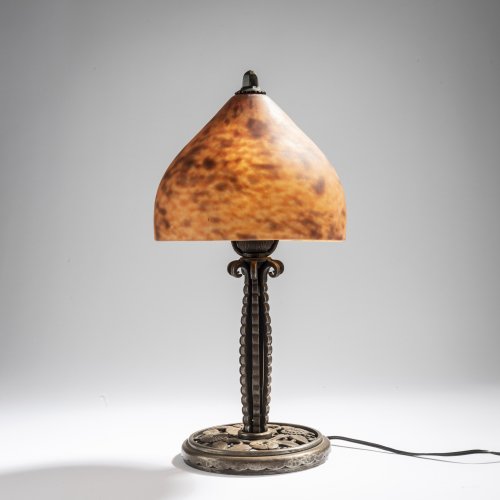
-
Sold
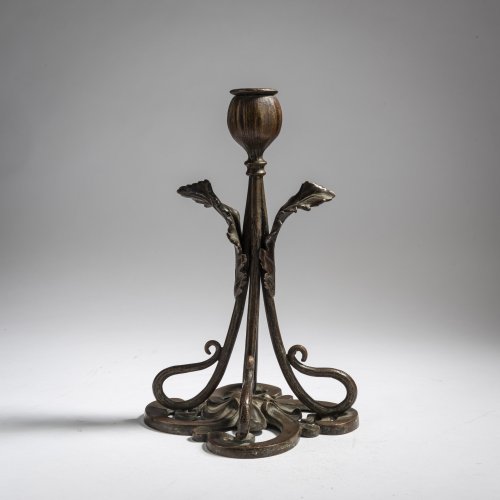
-
Sold
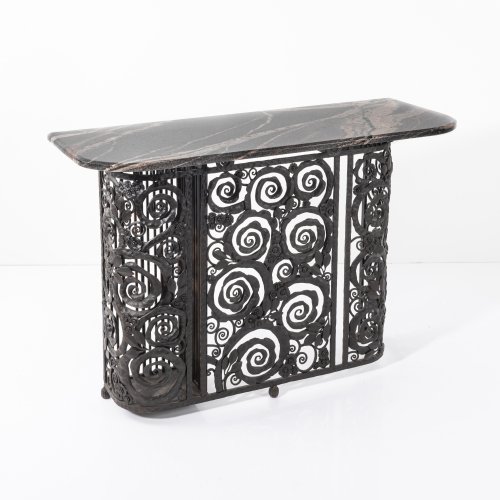
-
Sold
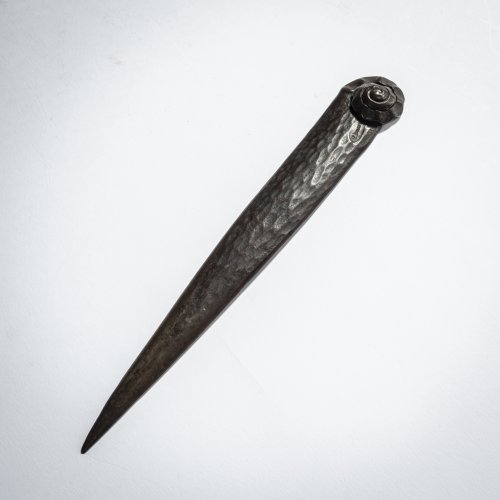
-
Sold
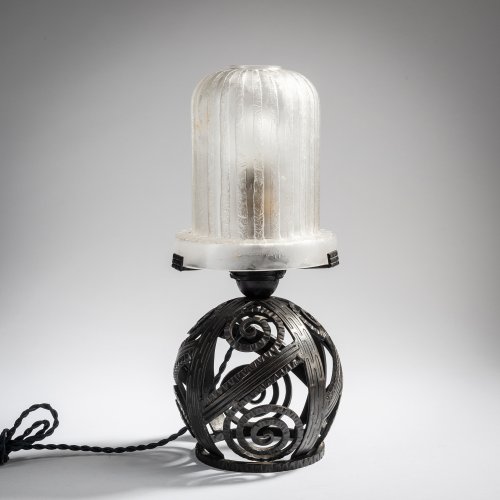
-
Sold
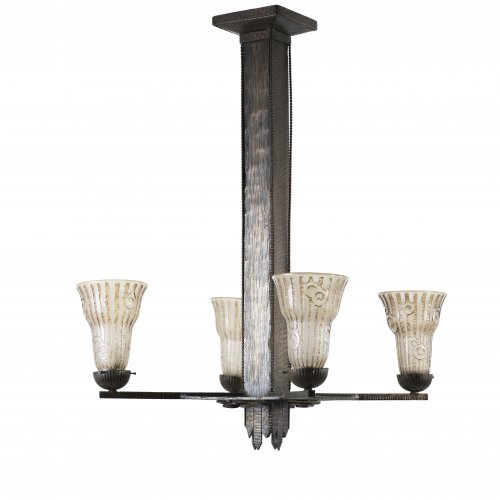
-
Sold
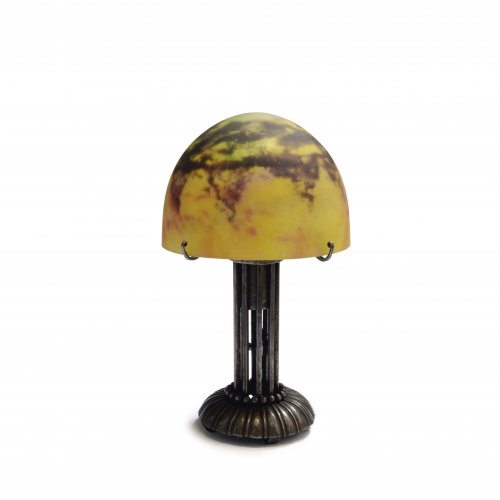
Edgar Brandt Daum Frères, Nancy
Small table light with mounting by Edgar Brandt, c1925
Hammer Price: 1,800 €
-
Sold
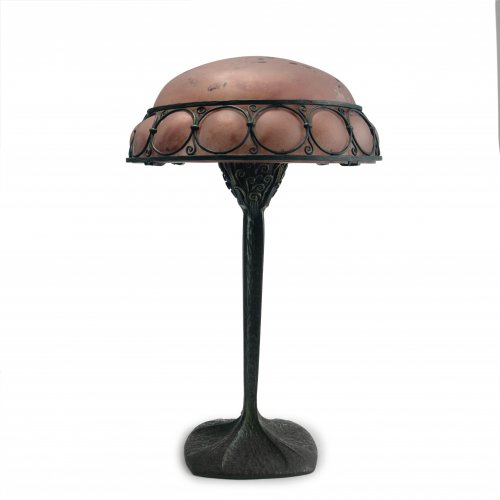
Edgar Brandt Daum Frères, Nancy
Table light with mouting by Edgar Brandt, 1922-23
Hammer Price: 7,000 €
-
Sold
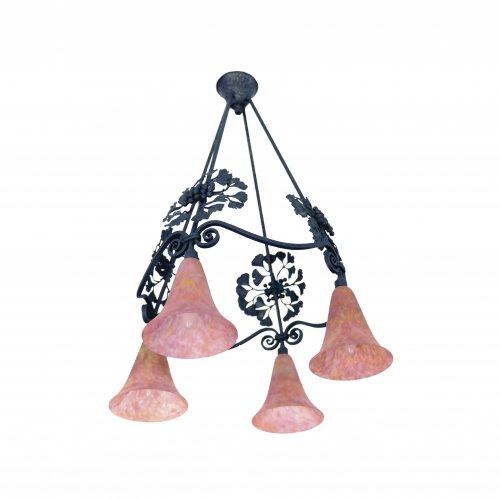
Edgar Brandt Daum Frères, Nancy
Ceiling light with iron mounting by Edgard Brandt, c1920
Hammer Price: 2,500 €
-
Sold
Edgar Brandt Schneider, Epinay-sur-Seine
Table light with a base by Edgar Brandt, c1925
Hammer Price: 3,000 €
